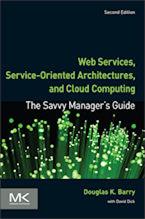Math XML
MathML: XML specification for describing mathematical notation and capturing both its structure and content. The goal of MathML is to enable mathematics to be served, received, and processed on the Internet, just as HTML has enabled this functionality for text. Organization: W3C. More information: MathML page on the W3C website.
OpenMath: XML specification for representing mathematical objects with their semantics, allowing them to be exchanged between computer programs, stored in databases, or published on the worldwide web. There is a strong relationship to the MathML recommendation from the Worldwide Web Consortium, and a large overlap between the two developer communities. MathML deals principally with the presentation of mathematical objects, while OpenMath is solely concerned with their semantic meaning or content. While MathML does have some limited facilities for dealing with content, it also allows semantic information encoded in OpenMath to be embedded inside a MathML structure. Thus, the two specifications may be seen as complementary. Organization: The OpenMath Society. More information: OpenMath Standard page on The OpenMath Society website.
Open Mathematical Documents (OMDoc): XML specification for representing the semantics and structure various kinds of mathematical documents, including articles, textbooks, interactive books, courses. OMDoc is an extension of the OpenMath and MathML standards, and in particular of the content part of MathML. Organization: MathWeb.org. More information: OMDoc.org Wiki.
eXtensible Data Format (XDF): XML specification of common scientific data format and general mathematical principles that can be used throughout the scientific disciplines. It includes these key features: hierarchical data structures, any dimensional arrays merged with coordinate information, high dimensional tables merged with field information, variable resolution, easy wrapping of existing data, user specified coordinate systems, searchable ASCII meta-data, and extensibility to new features/data formats. Organization: NASA. More information: XDF page on the NASA website. Also see Flexible Image Transport System Markup Language (FITSML).
Context for Math XML
Related Articles for Math XML
- Address XML
- Computing Environment XML
- Content Syndication XML
- Customer Information XML
- Electronic Data Interchange (EDI) XML
- Geospatial XML
- Human XML
- Localization XML
- Open Applications Group Integration Specification (OAGIS)
- Open Office XML
- Topic Maps XML
- Trade XML
- Translation XML
- Universal Business Language (UBL)
- Universal Data Element Framework (UDEF)
Author
Douglas K Barry
Principal
You may use this material for your work or classes. Reprint Policy. Be sure to check the menu at the left for other articles available on this site.
The Savvy Manager's Guide
Douglas K Barry is also the author of a book that explains Web Services, service-oriented architecture, and Cloud Computing in an easy-to-understand, non-technical manner.
Web Services, Service-Oriented Architectures, and Cloud Computing: The Savvy Manager's Guide (Second Edition)
by Douglas K Barry with David Dick
This is a guide for the savvy manager who wants to capitalize on the wave of change that is occurring with Web Services, service-oriented architecture, and—more recently—Cloud Computing. The changes wrought by these technologies will require both a basic grasp of the technologies and an effective way to deal with how these changes will affect the people who build and use the systems in our organizations. This book covers both issues. Managers at all levels of all organizations must be aware of both the changes that we are now seeing and ways to deal with issues created by those changes.

